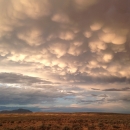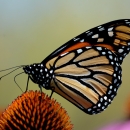Pre- and Post- Treatment Impacts of Japanese Brome Treatment on Pollinators in Sagebrush Rangeland
Funding Year | Amount | Location |
FY23 | $95,000 | Valley County and Jordan County |
Project Description
Japanese brome infestations are present within sagebrush sagebrush
The western United States’ sagebrush country encompasses over 175 million acres of public and private lands. The sagebrush landscape provides many benefits to our rural economies and communities, and it serves as crucial habitat for a diversity of wildlife, including the iconic greater sage-grouse and over 350 other species.
Learn more about sagebrush core and growth areas of the Charles M. Russell NWR. Herbicidal treatment sites will be paired with untreated Japanese brome invaded sagebrush areas and sagebrush areas with native dominated understory to determine effectiveness of restoration efforts and non-target impacts of the treatments. This work will compliment ongoing work on the response of sagebrush obligate songbirds to invasive annual grass treatments. Pre-treatment vegetation and pollinator sampling completed.
Partners
Charles M. Russell NWR, Montana State University



